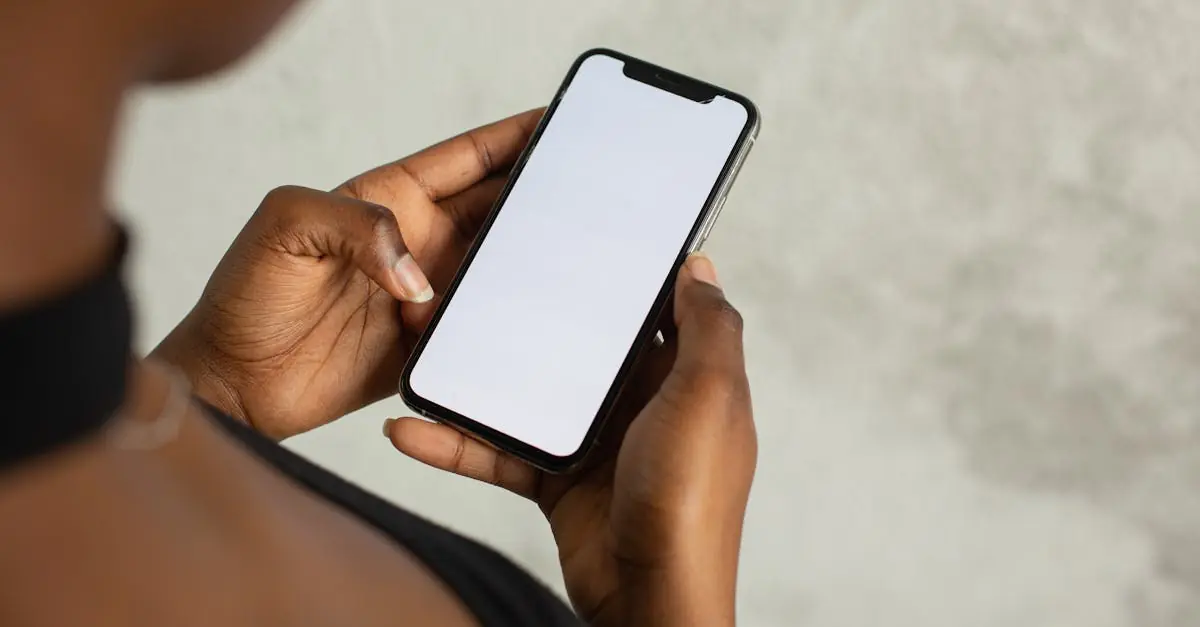Table of Contents
ToggleIn a world where smartphones are practically glued to our hands, mobile apps have become the superheroes of our daily lives. From ordering pizza in pajamas to tracking workouts while pretending to be productive, these little icons pack a punch. But what makes a mobile app truly stand out?
Popular Categories of Mobile Apps
Mobile apps serve various purposes, enhancing daily activities across numerous fields. Here are prominent categories of mobile applications.
Social Media Apps
Social media apps connect individuals and build communities. Platforms like Facebook or Instagram allow users to share updates and photographs. Instant messaging apps such as WhatsApp facilitate real-time communication. TikTok enables creative content sharing. These applications prioritize user interaction and foster relationships.
Productivity Apps
Productivity apps enhance efficiency and organization. Tools like Trello aid in project management through task allocation and deadlines. Google Drive allows users to store, share, and collaborate on documents seamlessly. Applications like Evernote help users capture and organize notes quickly. These apps support both personal and professional tasks by increasing productivity.
Health and Fitness Apps
Health and fitness apps promote wellness and active lifestyles. MyFitnessPal tracks dietary habits, helping users manage calorie intake. Fitness trackers, such as Strava, document physical activities and progress over time. Meditation apps like Headspace support mental health through guided sessions. These applications encourage users to maintain healthy habits.
Entertainment Apps
Entertainment apps provide endless leisure options. Streaming services like Netflix and Hulu deliver movies and TV shows on demand. Gaming apps, such as Candy Crush, offer engaging experiences for users. Music applications like Spotify allow for personalized playlists and music discovery. These apps cater to diverse entertainment preferences, making leisure activities accessible anytime.
Notable Examples of Mobile Apps
Mobile apps play a critical role in enhancing daily life. They simplify tasks, streamline communication, and provide entertainment options.
Social Media App Examples
Instagram serves as a platform for sharing photos and videos, allowing users to connect through visual content. Facebook offers networking opportunities by enabling users to foster relationships and engage in community discussions. Twitter supports real-time news sharing, letting individuals follow trends and participate in conversations. Snapchat focuses on ephemeral messaging, encouraging users to share moments without lasting permanence. TikTok thrives on short video content, enabling creativity with music and user interaction.
Productivity App Examples
Trello helps teams manage projects visually through boards and cards. Todoist offers task management with features that enhance organization and prioritization. Evernote functions as a note-taking tool, enabling users to capture ideas across devices. Slack facilitates team communication by centralizing conversations in channels and direct messages. Google Drive provides cloud storage, making it easy to collaborate on documents and access files any time.
Health and Fitness App Examples
MyFitnessPal tracks calories and macronutrients, empowering users to monitor their diets. Strava focuses on tracking running and cycling activities, allowing athletes to analyze performance. Fitbit offers health metrics by syncing with wearables for comprehensive activity tracking. Headspace promotes mental wellness through guided meditation and mindfulness exercises. Nike Training Club features workout plans and fitness tips from professionals, making it easy for users to achieve their fitness goals.
Entertainment App Examples
Netflix delivers a vast library of films and series, catering to diverse viewing preferences. Spotify allows users to stream music personalized through curated playlists and algorithm suggestions. YouTube enables video sharing on various topics, ensuring something for everyone. Amazon Prime Video offers original content along with mainstream films and shows. Twitch provides a platform for live streaming and gaming, fostering interaction between streamers and viewers.
Features to Look for in Mobile Apps
Evaluating mobile apps involves assessing several key features. Quality apps excel in user interface, functionality, security, and privacy.
User Interface and Experience
An intuitive user interface enhances user experience significantly. Clean navigation simplifies interaction while appealing design captures attention. Smooth animations and responsive controls improve engagement. Consistency in color schemes and typography lends professionalism. Accessibility options, such as voice commands and font adjustments, accommodate diverse user needs.
Functionality and Performance
Effective functionality remains essential for app success. High responsiveness ensures quick load times and seamless transitions. Offline access can enhance usability in areas with poor connectivity. Compatibility across multiple devices preserves user convenience. Regular updates and bug fixes contribute to optimal performance and reliability.
Security and Privacy
Robust security measures protect user data and enhance trust. Encryption safeguards sensitive information, while clear privacy policies inform users about data usage. Opt-in permissions prevent unauthorized access to personal data. Frequent security audits help identify vulnerabilities. Providing users with control over their data encourages responsible usage.
Future Trends in Mobile Apps
Mobile apps are evolving rapidly, influenced by technological advancements and user preferences. Notable trends are shaping the future landscape of mobile applications.
Rise of Augmented Reality
Augmented reality (AR) is transforming how users interact with mobile apps. Leading companies, such as Snapchat and Pokémon GO, showcase AR’s potential for immersive experiences. Users can engage in interactive gaming, navigate through AR maps, and try on virtual products. Integration of AR into mobile shopping apps allows customers to visualize furniture in their own homes, enhancing decision-making. As AR technology becomes more accessible, developers increasingly focus on creating engaging applications that blend digital and physical realities.
Increased Focus on Personalization
Personalization remains a key trend in mobile app development. Data-driven insights enable apps to tailor experiences to individual user preferences. For instance, streaming services like Netflix and Spotify suggest content based on viewing and listening habits. Customizable features enhance user engagement and satisfaction, making experience more relevant. Users expect apps to remember their preferences, simplifying future interactions. Personalized notifications and recommendations keep users informed and encourage continued usage. Therefore, incorporating personalization strategies will likely become essential for app success.
Mobile apps have undeniably transformed the way people interact with technology and each other. By offering convenience and enhancing daily activities they cater to diverse needs across various categories. The examples discussed illustrate how these applications not only simplify tasks but also enrich user experiences.
As mobile technology continues to evolve the focus on user interface and personalization will play a critical role in shaping future applications. With advancements like augmented reality and data-driven insights users can expect even more engaging and tailored experiences. The ongoing innovation in mobile apps promises to keep them at the forefront of daily life.





